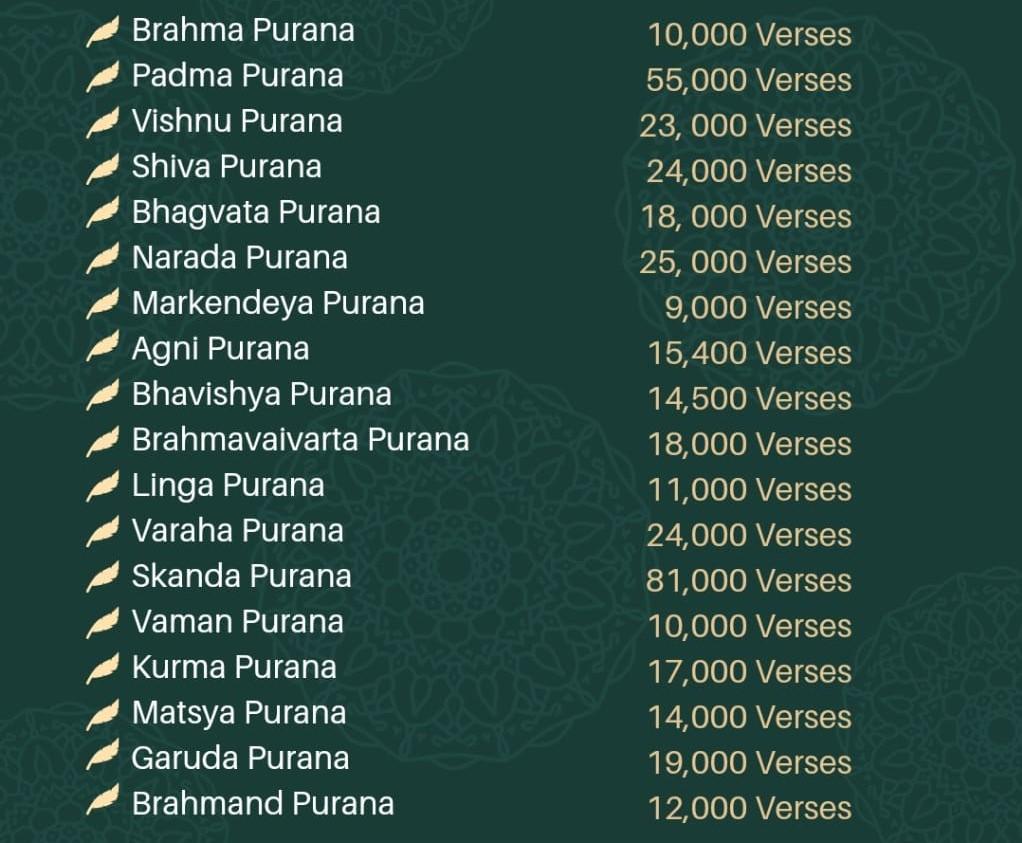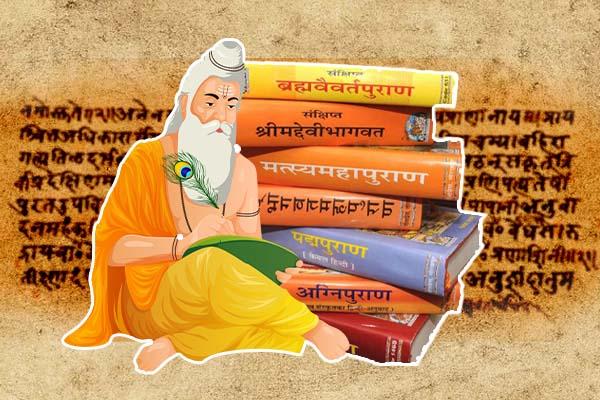- This topic has 0 replies, 1 voice, and was last updated by .
-
AuthorPosts
-
October 19, 2023 at 12:31 pm #963Up::0
1. What are Puranas ?
The Puranas play a vital role in Sanatan Dharma, or Hinduism. These are ancient religious scriptures that chronicle the creation, devastation, and rebirth of the cosmos as well as stories, myths, legends, and teachings about numerous gods and goddesses.The name “Purana” refers to ancient eras, and it is thought that these manuscripts date back thousands of years.They give instruction on moral and ethical ideals as well as insights into the intricate cosmology and mythology of Hinduism. The puranas continue to have a tremendous influence on the world’s Hindu population’s beliefs and behaviour.

2. Types of Puranas and Mahapuranas.
Each of the 18 Puranas has a distinct purpose and personality, and they are typically divided into three categories as Mahapuranas :
1. Sattva Puranas: These Puranas are thought to be in the manner of goodness and focus particularly on Vishnu. These are the Varaha Purana, the Padma Purana, the Garuda Purana, the Narada Purana, the Bhagavata Purana, and the Vishnu Purana.
2. Rajas Puranas: These Puranas are thought to be written in the manner of passion and focus particularly on Brahma. The Brahma Purana, the Brahmanda Purana, the Brahmavaivarta Purana, the Markandeya Purana, the Bhavishya Purana, and the Vamana Purana are among them.
3. Tamas Puranas: These Puranas are thought to be in the style of ignorance and focus mostly on Shiva. The Shiva Purana, the Linga Purana, the Skanda Purana, the Agni Purana, the Matsya Purana, and the Kurma Purana are some of them.

3. Who wrote the puranas ?
The Puranas were not penned at a single time or by a single person. Instead, they were assembled over a lengthy period of time by several authors, and many of the myths and stories that made up them were first spoken orally for many generations before being recorded. In addition to offering helpful advice on rites, ceremonies, and other facets of religious life, they are a treasure of knowledge on Hindu mythology, cosmology, theology, philosophy, and ethics.

4. Purpose behind writing the puranas.
The Puranas were composed primarily for the following reasons:
1. Ancient knowledge transmission and preservation: The Puranas were composed to transmit and conserve the myths, legends, and tales that were passed down orally from one generation to the next.
2. Devotion and worship of deities: The Puranas contain in-depth accounts of the traits, qualities, and tales of the many deities and serves as a manual for their devotion.
3. Morality and ethics: The Puranas are full with tales that serve as examples of moral and ethical ideals and give advice on how to live a good and fulfilling life. They promote the virtues of honesty, compassion, and devotion while emphasising the significance of dharma (righteousness), karma (activity), and moksha (liberation).
4. Historical accounts: The Puranas also provide histories of Indian monarchs, dynasties, and historical occasions. They serve as a useful resource for knowledge about India’s social, political, and cultural past.

Attachments:
You must be logged in to view attached files. -
AuthorPosts
- You must be logged in to reply to this topic.